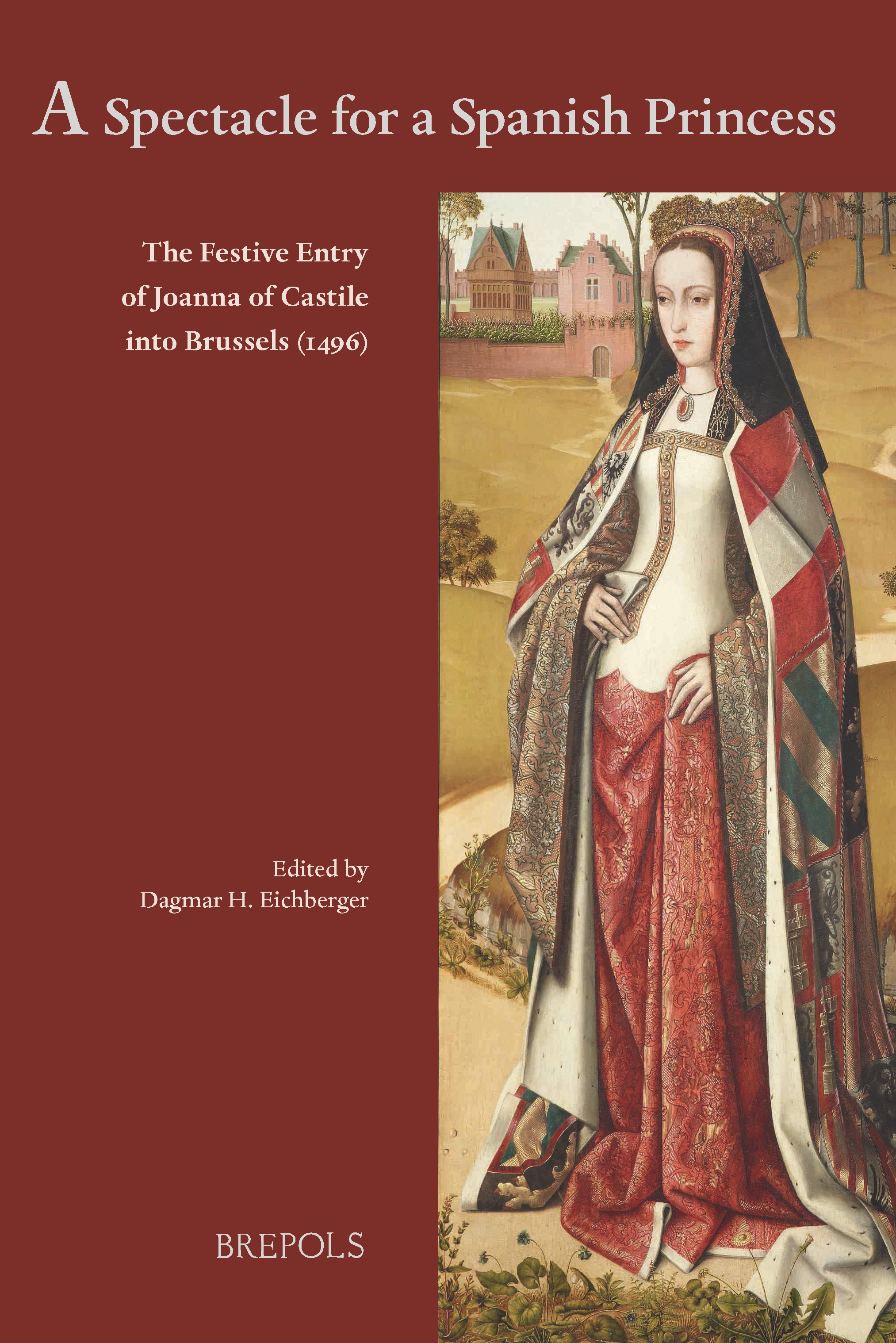Author
Dagmar H. Eichberger (ed.)
Characteristics
440 pages; 240 color illustrations; hardcover; 17.8 x 25.4 cm
Publication
English; edited by Brepols with the collaboration of CEEH; 2024
ISBN
978-2-503-59443-9
Price
€110,00
Buy on our site and save 5% until January 5 (Coupon code: NAVIDAD 2025)
After marrying Philip the Fair in Lier, Princess Joanna, Infanta of Castile, travelled to Brussels by herself and on the evening of 9 December 1496 she reached the outskirts of the city, where she was welcomed by a procession of secular and ecclesiastical dignitaries. Equipped with torches and processional crosses, the citizens accompanied the sixteeen-year-old princess all the way to the heart of Brussels, the large market square with its magnificent town hall. The Berlin manuscript 78 D5 is the first illustrated report of a royal entry concentrating on one single lady – a treasure to all those interested in urban culture of the Early Modern period, whose author compares the well-lit city with the splendours of Troy and Carthage. Twenty-eight stage sets, or tableaux vivants, and an elaborate procession mirror the costly intellectual program presented to Joanna. The carefully planned theatrical productions underscored themes of marriage, female virtues and the politics of war and peace. The festivities included entertainments, soundscapes, and pyrotechnic amusements. In this volume the Latin texts are made available in English translation and the entire manuscript, with its sixty-three folios, is reproduced in colour. In addition, eleven leading scholars present their new findings on this spectacular entry from an interdisciplinary approach.
Dagmar H. Eichberger taught at the Universities of Canberra, Melbourne, Heidelberg, Jena, Konstanz, Paris, Giessen and Vienna. She is the leading expert on Margaret of Austria, Joanna of Castile’s sister-in-law. She has published on Renaissance culture in the Netherlands and Germany and co-edited several volumes on Jan van Eyck, Albrecht Dürer, Religion and Visual Culture, Burgundian Women and Visual Typology. Further research on art objects as material culture and the history of early collections is in progress.

